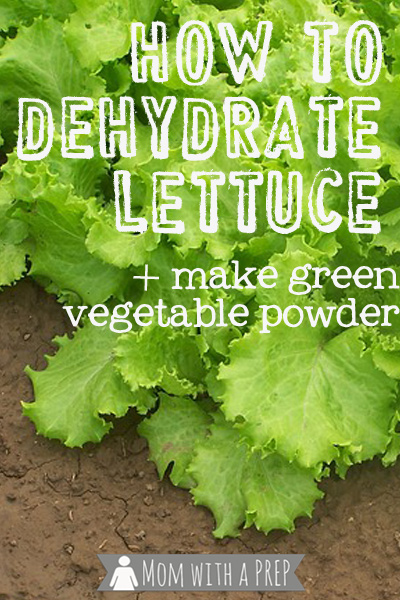I know… I know…why on earth would anyone want to dehydrate lettuce? My answer? Because I can!
Now is prime lettuce growing season all over the United States. The weather isn’t too hot, it isn’t too cold, and lettuce loves milder temps. So what do you do when your lettuce crop is more bounty than you can eat? Sure, you can give it to the neighbors, and sure, you could just compost the extra. But why not do something more with it?
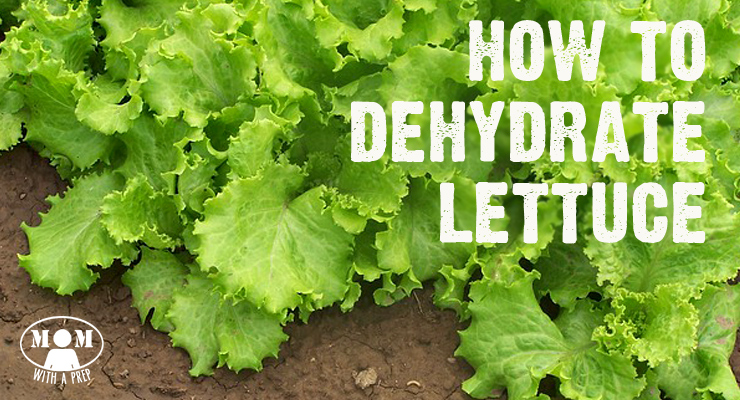
Dehydrate Lettuce
Be sure to separate all of your leaves and soak them in cold water to remove any debris and wash any dirt/chemicals.
Dry by patting with a kitchen cloth or laying out on a tea towel or using a salad spinner.
Break off the fibrous membranes at the bottom of each leaf. You can put those with your normal composting. While some would suggest going ahead and using it, I prefer not to because it doesn’t dry at the same pace as the rest of the leaf and I don’t want to leave things in for longer than necessary.
Step-by-Step Tutorial
Place leaves in your dehydrating trays being careful to not overlap much. They shrink pretty quickly while drying, so I don’t mind packing in just a tiny bit. I use this dehydrator, but any dehydrator will work. I haven’t tried this in just an oven with the door propped open as you don’t want a high temp.
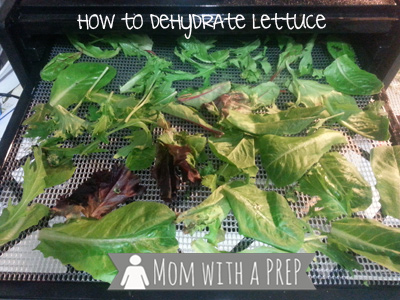
Dry at 105F for anywhere from 4-8 hours, depending on the water content of your lettuce and the relative humidity in your home.
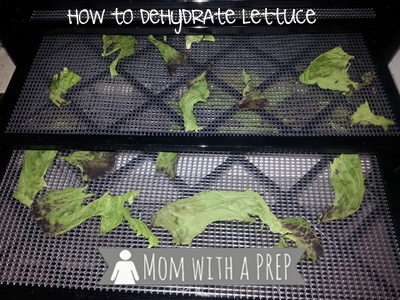
Lettuce is done when it easily cracks apart when you pick it up.
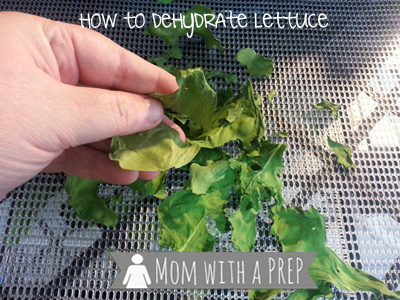
Store in an airtight container or powder immediately to add to your green powder. My blender blends to a pretty fine powder in just a few minutes, but if you find that your blender can’t quite finish it that way, you can run your powder through a mesh and re-powder the larger pieces in a coffee grinder – works wonders, especially when I’m doing kale which can be a little more fibrous.
How to Make Lettuce Powder?
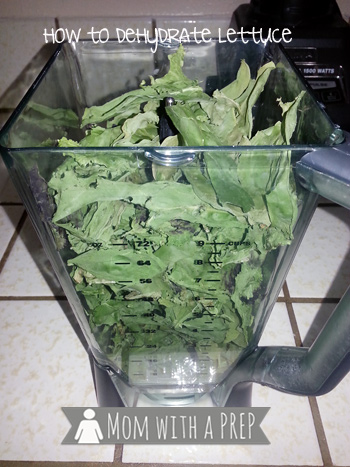
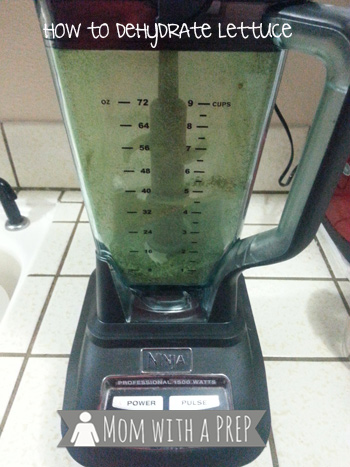
Another source is the bagged lettuce that you get at the grocery store. I love when my grocery has them on clearance because I’ll grab a bag for dinner, and dehydrate the rest. I usually purchase spring mix or bagged spinach. There’s really not much point in Romaine or Iceberg.
But here’s a tip.
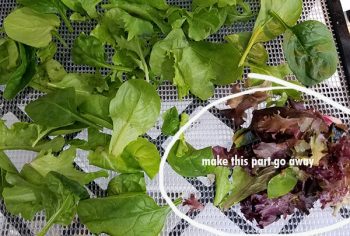
That bagged salad has all that purple leaf in it. It’s great for the quick bitter bite, but in my experience, it stinks for dehydrating. Unless green lettuce gets icky. So here’s what I do when I’m going to dehydrate a bag of salad greens:
I toss it into the compost 🙂 Yep, I do. There is a wide variety of greens, I don’t need to mess with this witty, slimy kind of purple stuff, ever, in my dehydrator. And it’s the first to go when a bag starts to get iffy. blech.
Why Dehydrate Lettuce, You Ask?
I try not to waste much in our home, so when a fruit or vegetable is going to go unused, I like to preserve it for the times when I don’t have it available. Sometimes I freeze it. Most times I dehydrate it. And in the case of lettuce, I dehydrate it, create a powder, and add it to my green powder that we add to everything like eggs and salads and smoothies and meatloaf, and more. It’s a way to add a kick of nutrition to a meal without the extra texture.
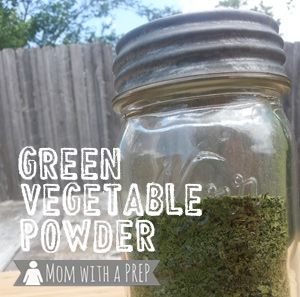
Granted, there’s not a ton of nutrition in lettuce, especially if you’re using Iceberg (but please don’t bother), but you’ve got some good dark leafy green lettuce, and why not add it to your food supply instead of just throwing it away.
Nutritional Value of Lettuce
The good rule of thumb about using lettuce, the darker the green, the better it is. So Iceberg lettuce, which is basically a little fiber and water isn’t anywhere as nutritious as using darker green varieties like Green Leaf, Romaine, or other varieties:
The greener the leaf, the more nutrients it provides, according to the Academy of Nutrition and Dietetics. Green leaf lettuce makes a nutrient-dense choice, and for those young eaters who may be a little picky, it also has a milder taste than other greens. Just 1 cup delivers fiber, iron and B vitamins together with a boost of several other vitamins. [such as Vitamin A & K]
Source
I’ll also be quite honest and say that because of the lack of the powerhouse nutrition, you’ll find in other greens like kale and spinach, I don’t dehydrate lettuce unless I’m already dehydrating something else, or if I have a massive overload from the garden or bought too much from the store. For some items, it is worth it to dehydrate only a tray or two, but not with lettuce unless I’m already doing something else.
Final Thoughts
I know it sounds crazy, but give it a try to see how it works for you. I’d really love to hear about your experience!
Katy Willis is a writer, lifelong homesteader, and master herbalist, master gardener, and canine nutritionist. Katy is a preparedness expert and modern homesteader practicing everyday preparedness, sustainability, and a holistic lifestyle.
She knows how important it is to be prepared for whatever life throws at you, because you just never know what's coming. And preparedness helps you give your family the best chance to thrive in any situation.
Katy is passionate about living naturally, growing food, keeping livestock, foraging, and making and using herbal remedies. Katy is an experienced herbalist and a member of the CMA (Complementary Medical Association).
Her preparedness skills go beyond just being "ready", she's ready to survive the initial disaster, and thrive afterward, too. She grows 100% organic food on roughly 15 acres and raises goats, chickens, and ducks. She also lovingly tends her orchard, where she grows many different fruit trees. And, because she likes to know exactly what she's feeding her family, she's a seasoned from-scratch cook and gluten-free baker.
Katy teaches foraging and environmental education classes, too, including self-sufficient living, modern homesteading, seed saving, and organic vegetable gardening.
Katy helps others learn forgotten skills, including basic survival skills and self-reliance.
She's been published on sites such as MSN, Angi, Home Advisor, Family Handyman, Wealth of Geeks, Readers Digest, and more.


